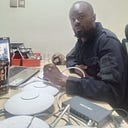CELL PHONE TRIANGULATION
How law enforcement can use triangulation to track a cell phone
There are several commonly used methods to track or determine a cell phone’s location:
One method of tracking a mobile phone is by identifying its location, whether it’s moving or stationary. Localizing a cell phone may be influenced by technology like multilateration of radio signals or hyperbolic positioning.
This works by computing the time difference of arrival of a signal emitted from a mobile device to three or more receivers to help pinpoint the location of the device. This is possible because the mobile phone emits idle signals to nearby cell phone towers when switched on. The strength of the signal can help narrow down the antenna masts to which the phone is currently connected.
The other method can be by using GNSS (Global Navigation Satellite System), a constellation of satellites that provide positioning, navigation, and timing globally or regionally. Unlike GPS, which uses satellites to determine a device’s location, triangulation uses signal strength measurements from multiple towers to calculate a mobile device’s location.
Mobile device positioning can be used for location-based services such as maps, navigation, and tracking services, among others, that disclose the actual device’s coordinates.
How triangulation actually works
Triangulation via cell towers is a network-based technique that is achieved using the service provider’s network infrastructure. It can be easy and convenient since it can be implemented non-intrusively without having to access or compromise the handset.
Triangulating a mobile device requires knowledge of its International Mobile Equipment Identity number, simply known as IMEI. The service provider, either in conjunction with law enforcement or emergency services, uses the IMEI number to track the device on their infrastructure and provide general locations.
The powered mobile phone always communicates wirelessly with one or several of the closest base stations, implying that the device is located close by. The power levels and antenna patterns help localize the mobile device being tracked and estimate the distance to the base station.
Greater signal strengths and shorter round-trip signal times, i.e., the time it takes for a signal to bounce back between a tower and a cell phone, can help estimate with a fair level of accuracy how far a transmitting cell phone is from the particular cell tower it’s connected to. If the cellphone is also transmitting signals to a second or third tower at the same time, location accuracy gets better.
A device’s location approximation can be done by interpolating signals between adjacent cell phone towers, and a point of overlap between three or more towers can help pinpoint the cell phone’s location. It’s more accurate in urban areas where the concentration of base stations is sufficiently high that a device is connected to one or two very close towers, sometimes within meters of each other. Accuracy is lower in rural and sparsely populated areas as the distance between cell towers is greater, thereby giving less precise locations.
With cell tower triangulation, specific details can be obtained, such as call history, i.e., incoming and outgoing calls and from which particular location they were made or received, route of travel to and from locations, and even the ‘permanent residence’ of the device in question.
Uses
Investigations
Triangulation can be used by law enforcement to track down criminals or missing persons or assist in investigations where the whereabouts of an individual under investigation can be useful in solving cases or obtaining convictions. Triangulation can help with log generation and history generation.
Emergencies
Emergency services can also use triangulation when dispatching help for a distress call to a location if communication is lost or disrupted.
It can also be useful for parents or guardians when trying to determine the location of children with cell phones or for individuals trying to track down lost or stolen mobile devices.
Though effective, triangulation is not perfect, as it does not always mean that a phone is connected to the cell tower right next to it. Connection to towers is generally influenced by signal strength and how many users are connected to a particular tower at any one point. As a mobile device user moves along, the device changes towers, so it can only provide approximate locations, and accuracy will be even lower in areas with poor cell phone coverage.
For regular civilians, this might not be an option as it requires access to the service provider and probably court warrants and police involvement as privacy concerns might arise if the service is used improperly or without consent.
